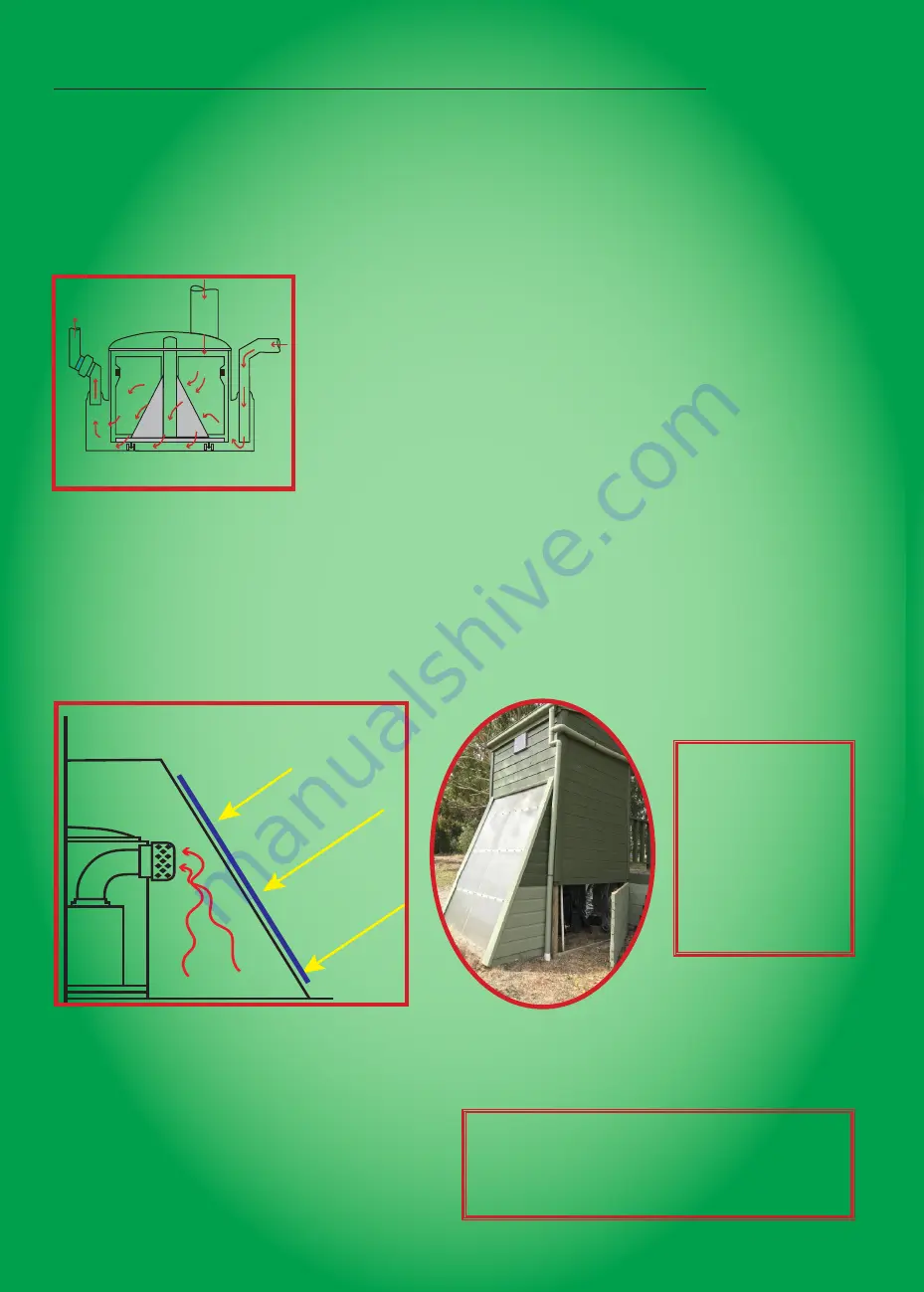
Page 3
HOW ROTA-LOO WORKS AND ENSURES EFFICIENT COMPOSTING
Inside the Rota-Loo are six bins located on a turntable. When a bin is in use it is located directly below
the toilet pedestal and human waste, toilet paper and bulking material will be added to the bin. When the
bin is full the turntable is rotated to the next available bin and the full bin is allowed to compost until it is
needed again - typically about 12 months. By keeping the composting material inside the Rota-Loo, the
best composting environment is maintained, and there is no need to move uncomposted material.
In the bottom of the bins there are a number drainage holes and a replaceable Geo-textile filter which
allows liquid to seep through to the outer tank reducing the moisture content of the composting pile.
Oxygen is provided by air flow which is created by the continuous operation of the fan. This fan, located
evaporated
in normal operation, there is provision to drain off the excess liquid to a
secondary evaporator
or absorption trench.
Heat for composting is generated by the bacterial activity. Retaining the heat available is important and
adding extra heat will assist the process. Using good insulation within the structure and passive solar
heat are both important methods to create and retain internal warmth.
Typical air flow through the chamber
on the air outlet pipe, also creates a negative pressure at the pedestals,
making sure your toilet room is always fresh. The sides of the bins also
have a number of holes to allow warm air to flow around and through
the bin delivering oxygen to the bacteria.
Typically, the air flow through the Rota-Loo is sufficient to evaporate the
liquid that has collected in the base of the Rota-Loo chamber - note that
the design of the Rota-Loo has the inlet vent low and opposite the outlet
to promote cross-flow.
Where the usage of the Rota-Loo results in excess liquid that cannot be
The design of the Rota-Loo provides a natural air-gap insulation around the bins. It is recommended that
the Rota-Loo is installed in an insulated space to help retain heat - this is particularly important in cold
climates where temperatures are regularly below 10°C. Placing the Rota-Loo in a sun-facing position and/
or in a Soltran module will improve operation.
A significant amount of heat is lost in the airflow system, so a Rota-Loo installation requirement is that
the inlet air is drawn from a warm air area, preferably through piping that acts as a solar collector (being
placed in a sunny location and painted black are the simplest methods).
When a composted bin has rotated through the
Rota-Loo chamber, it will be ready to empty
before filling again. If all has been operating
well, the result will be a soil like Humus compost
which can be used as a fertiliser in the garden.
The Soltran Principal
Clear sheeting is angled at
60 degrees with the largest
surface preferably facing
north. The rays of the sun
heats up the cool air inside,
the warm air is drawn into
the Rota-Loo by the fan
in the vent pipe. The front
of the Soltran can also be
used as the access door to
the Rota-Loo room.
State Regulations often stipulate the disposal methods of
composted waste from a compostable toilet. Please check
with your local authority. Typically in Australia, authorities
require that humus from a composting toilet be buried with
300mm of soil on top and in a location that is not intended
to be used for food cultivation for three months.





































